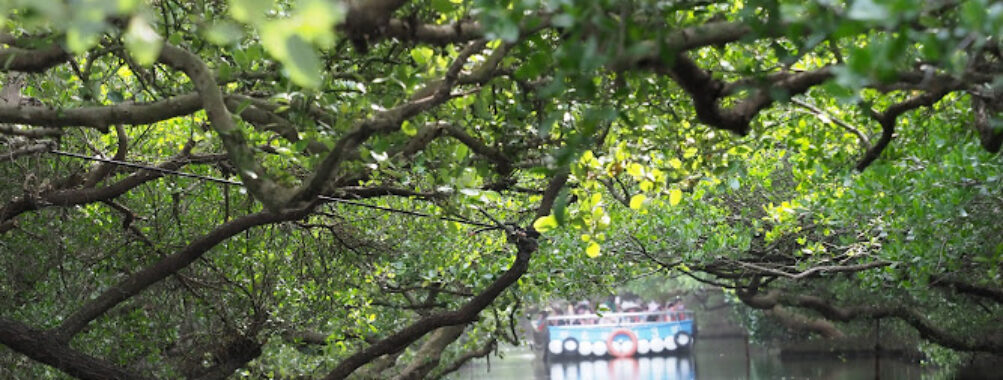
Taijiang National Park
Table of Contents
Description
Taijiang National Park is one of those rare gems that quietly steals your breath away without screaming for attention. Located in southwestern Taiwan, it stretches across a vast coastal area teeming with mangrove forests, wetlands, and a rich tapestry of native wildlife. If you’re someone who digs the kind of landscapes where you can lose yourself in nature’s subtle symphony—the rustle of leaves, the splash of water, the distant calls of birds—this place will feel like a secret haven. Unlike the usual tourist traps, Taijiang offers a genuine, laid-back vibe that invites you to slow down and soak in the environment.
What really sets this park apart is its unique ecosystem. It’s not just a pretty backdrop; it’s a living, breathing habitat supporting diverse species, especially marine and aquatic life. The extensive lagoons and saltwater wetlands create an intricate network of waterways and mudflats that are crucial for migratory birds and local wildlife alike. And if you’re a birdwatcher—or even just a casual nature lover—you’ll find the black-faced spoonbill reserve an absolute highlight. Spotting one of these elegant, endangered birds gliding over the water is an experience that’s hard to forget.
Taijiang National Park also holds a deep cultural significance. The area’s old shipping channels and traditional industries tell stories of early Han settlers and their relationship with the sea. Walking through the park, you get a sense of history woven seamlessly with nature, making it more than just a pretty place to hike or snap photos. It’s a living museum of coastal heritage and ecological wonder.
Key Features
- Extensive mangrove forests providing a rare glimpse into coastal ecology
- Vast wetlands and lagoons that serve as critical habitats for migratory birds and marine life
- Black-faced spoonbill reserve—a must-see for bird enthusiasts
- Accessible hiking trails suitable for all ages, including kid-friendly options
- Wheelchair accessible entrances and parking, making it inclusive for visitors with mobility needs
- Onsite facilities such as public restrooms for convenience
- Rich cultural heritage with old shipping routes and traditional fishing industries still evident
- Opportunities for photography, nature walks, and quiet reflection away from crowded spots
Best Time to Visit
Picking the right time to visit Taijiang National Park can really change your experience. The best months tend to be from late fall through early spring—think November to March—when the weather is cooler and much more comfortable for wandering around the wetlands and mangroves. Plus, this period coincides with the migratory season for many birds, so your chances of spotting rare species like the black-faced spoonbill are at their peak.
Summer can get pretty hot and humid, and the park’s coastal location means you might run into some rainy days, especially during Taiwan’s typhoon season. But hey, if you don’t mind a bit of humidity and occasional showers, the summer months still offer lush greenery and vibrant wildlife activity. Just pack a good hat, sunscreen, and maybe a rain jacket—you’ll thank me later.
How to Get There
Getting to Taijiang National Park is easier than you might think, even if you’re not a local. The park is situated near Tainan, one of Taiwan’s older cities, which is well-connected by train and bus services. From Tainan city center, you can hop on local buses or grab a taxi to reach the park entrances. If you’re driving, there’s wheelchair accessible parking available, which is a nice touch for those who prefer the flexibility of a car.
One thing I’d recommend—try to avoid peak rush hours in the city to make your trip smoother. And if you’re feeling adventurous, renting a bike around the park’s outskirts can be a refreshing way to explore the coastal scenery at your own pace. Just be prepared for some uneven terrain if you stray off the main paths.
Tips for Visiting
Alright, here’s where I get a bit personal. Having been to Taijiang a couple of times, I’ve learned a few things that can really make your visit more enjoyable and less stressful.
- Bring bug spray. Mangroves and wetlands are breeding grounds for all sorts of insects, especially in warmer months. A good repellent saves you from constant swatting and itching.
- Wear comfortable shoes. The trails are generally well-maintained but can get muddy or slippery, especially after rain. Trust me, those cute sandals won’t cut it here.
- Plan for limited food options. There aren’t many eateries inside the park, so pack some snacks and water. You’ll want to stay hydrated, especially if you’re hiking.
- Respect the wildlife. It’s tempting to get close for that perfect photo, but remember these creatures are in their natural home. Keep a safe distance and avoid disturbing their habitats.
- Use the public restrooms. Facilities are clean and conveniently located, so no need to worry about nature calls mid-hike.
- Bring a camera or binoculars. Whether you’re a pro or just snapping pics for fun, the park’s scenery and wildlife offer plenty of photo ops. Binoculars can up your birdwatching game significantly.
- Go early or late in the day. The light is better for photos, and the temperature is cooler. Plus, you’ll likely avoid the bulk of the crowds.
- Don’t rush. Taijiang isn’t about ticking off a checklist. Give yourself time to sit by the water, watch the birds, and just breathe in the salty air. It’s surprisingly meditative.
Visiting Taijiang National Park is like stepping into a quiet world where nature and history walk hand in hand. It’s not flashy or overhyped, but that’s exactly why it’s worth your time. If you’re looking for a place to reconnect with the natural rhythms of the coast, see some rare wildlife, and maybe even learn a bit about Taiwan’s maritime past, Taijiang is calling your name.
Location
Places to Stay Near Taijiang National Park
Find and Book a Tour
Explore More Travel Guides
No reviews found! Be the first to review!